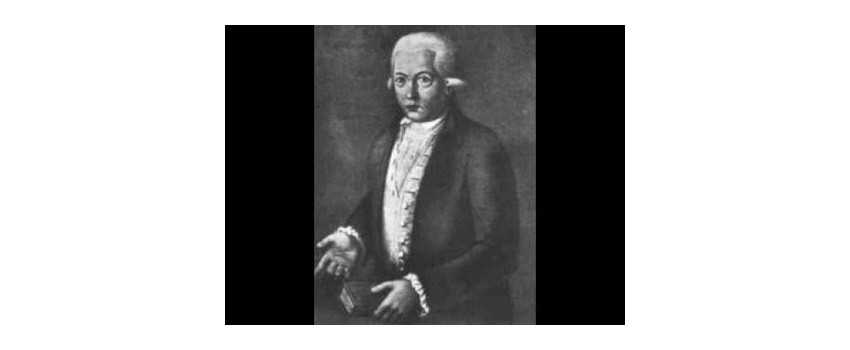Allegro for Violin and Piano by Fiocco (Schott)
Allegro for violin and piano by Fiocco (Schott)
Joseph-Hector Fiocco, a talented composer and harpsichordist, left an indelible mark on the late Baroque period. Born on January 20, 1703, in Brussels, Fiocco's musical journey was shaped by his father Pietro Antonio Fiocco, an accomplished Italian composer, and his stepbrother Jean-Joseph Fiocco. With a deep passion for music and an ability to master Greek and Latin, Fiocco's talents extended beyond the realm of music.
Early Years and Education
Fiocco's musical education began at an early age under the guidance of his father and stepbrother. His father, Pietro Antonio Fiocco, provided him with a solid foundation in music theory and composition. Simultaneously, Fiocco honed his linguistic skills, becoming proficient in Greek and Latin, which later enabled him to teach these subjects in a school setting. This multidisciplinary approach to education would shape Fiocco's unique perspective as a composer.
Ducal Chapel of Notre-Dame du Sablon
Before 1730, Fiocco's work at the Ducal Chapel of Notre-Dame du Sablon under the direction of his stepbrother showcased his emerging talent. It was during this period that Fiocco's compositions began to gain recognition, setting the stage for his future success. In 1730, Fiocco was appointed as the sous-maitre (submaster) of the Notre-Dame du Sablon, solidifying his position in the world of sacred music.
Antwerp Cathedral and Musical Mastery
In 1731, Fiocco left the Ducal Chapel and assumed the role of Sagmeister (choirmaster) at Antwerp Cathedral. This marked a significant turning point in his career, as he was entrusted with overseeing the music at one of Belgium's most esteemed cathedrals. Fiocco's tenure at Antwerp Cathedral, which lasted from 1731 to 1737, allowed him to experiment with various choral compositions, including motets and Mass settings. These works showcased Fiocco's mastery of polyphony and his ability to evoke deep emotions through music.
Return to Brussels and St. Michel College Church
In 1737, Fiocco returned to his birthplace, Brussels, and began working at St. Michel College Church. This marked another significant chapter in his career, as he contributed to the musical landscape of his hometown. Fiocco's compositions at St. Michel College Church showcased his versatility, as he seamlessly blended French and Italian influences. His ability to fuse different musical styles demonstrated his innovative approach to composition.
Compositions and Legacy
Joseph-Hector Fiocco's compositions spanned various genres, leaving a lasting impact on the music world. His choral pieces, including motets and Mass settings, displayed his deep understanding of sacred music. Among his notable works are the Lamentations du Jeudi Saint, a Missa solemnis, and the Pieces de Clavecin. The latter, dedicated to the Duke of Arenberg, showcased Fiocco's expertise as a harpsichordist and his ability to incorporate both French and Italian elements into his compositions.
The Influence of Couperin and Italian Music
Fiocco's two harpsichord suites, dedicated to the Duke of Arenberg, exemplify his ability to blend the styles of François Couperin and Italian composers. The first suite, in particular, begins in the style of Couperin and transitions into four movements influenced by Italian music: Adagio, Allegro, Andante, and Vivace. This fusion of styles highlights Fiocco's innovative approach and his ability to create harmonious compositions that resonate with audiences.
Fiocco's Allegro in the Suzuki Violin Repertoire
Fiocco's Allegro, a part of the Suzuki violin repertoire Book Six, has become widely known among Suzuki violin students. Renowned violinist Itzhak Perlman has recorded this piece, further cementing its popularity. This lively and energetic tune has even been arranged for string quartets, making it a favorite choice for wedding ceremonies.
Fiocco's Musical Journey Cut Short
Despite the promising trajectory of his career, Joseph-Hector Fiocco's life was tragically cut short. At the age of 38, he passed away in Brussels, leaving behind a legacy of musical brilliance. His contributions to the late Baroque period and his innovative compositions continue to inspire musicians and audiences alike.
Conclusion
Joseph-Hector Fiocco's life and music serve as a testament to his immense talent and creativity. From his early years in Brussels to his influential positions at the Ducal Chapel, Antwerp Cathedral, and St. Michel College Church, Fiocco left an indelible mark on the musical landscape of his time. His compositions, ranging from choral pieces to harpsichord suites, showcase his ability to blend different styles and create harmonious works of art. Though his life was tragically cut short, his music lives on, inspiring generations of musicians and captivating audiences with its timeless beauty.

Allegro for violin and piano by Fiocco (Schott)